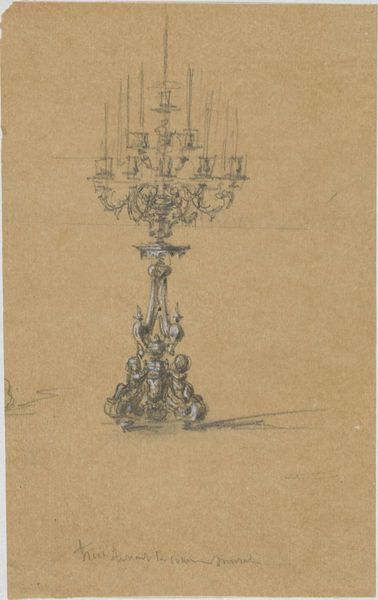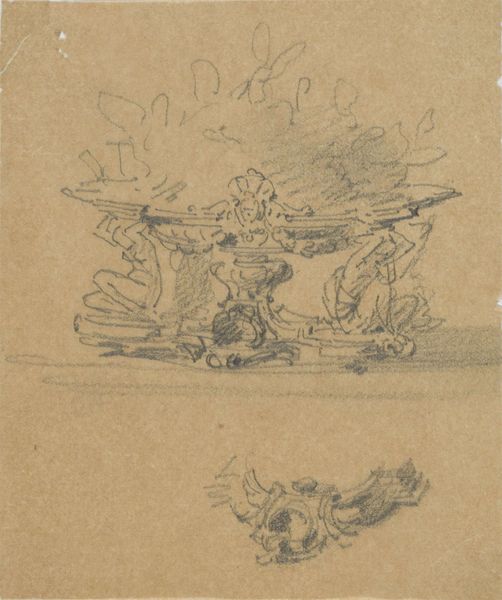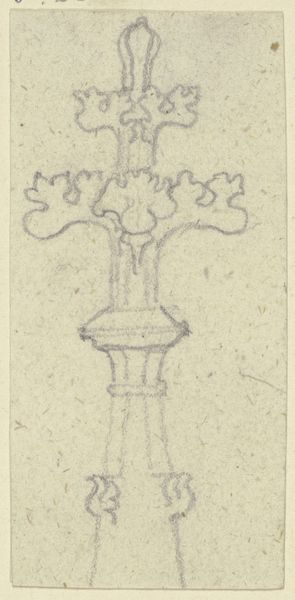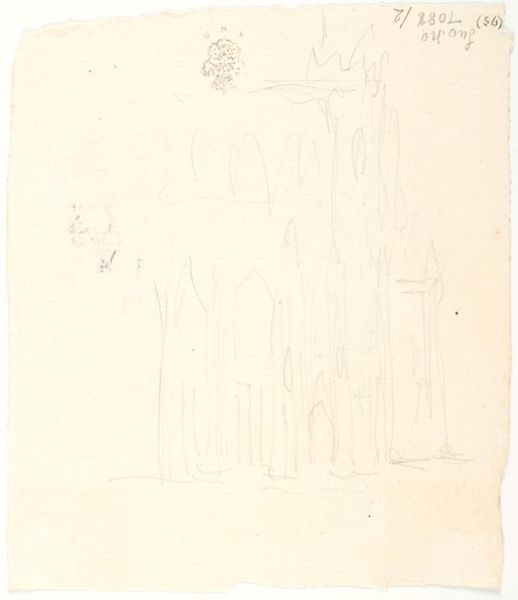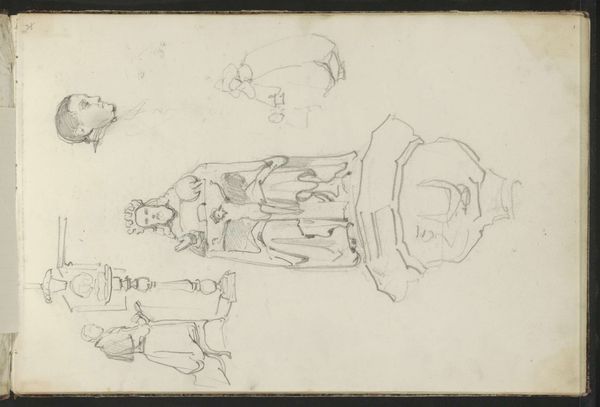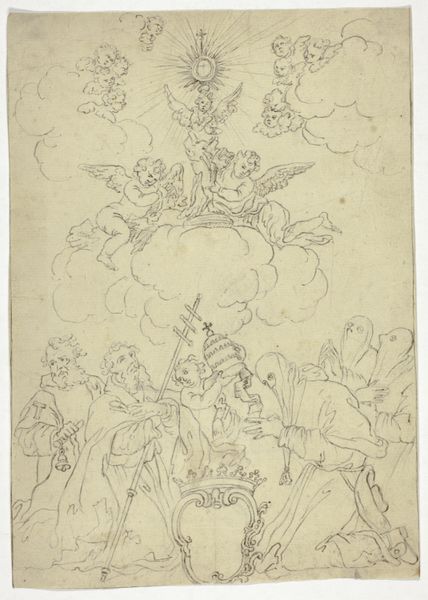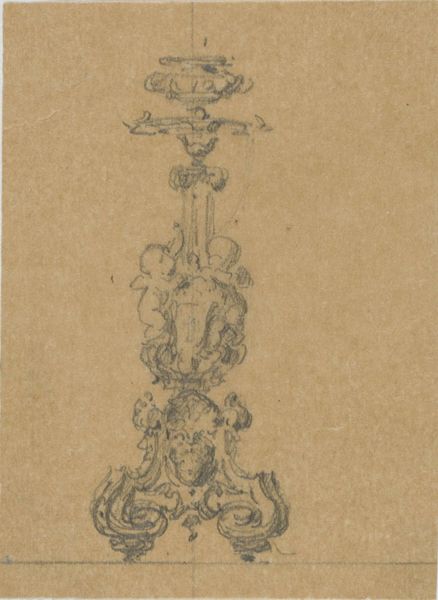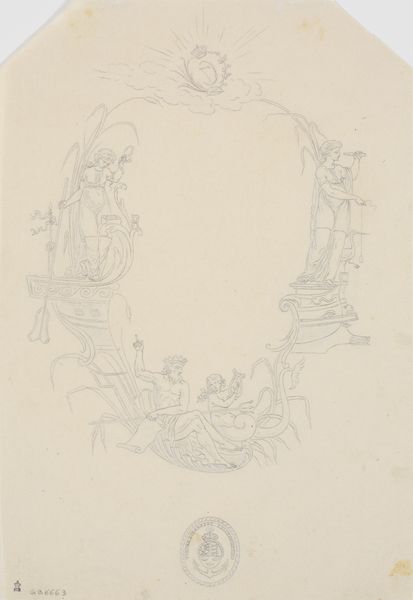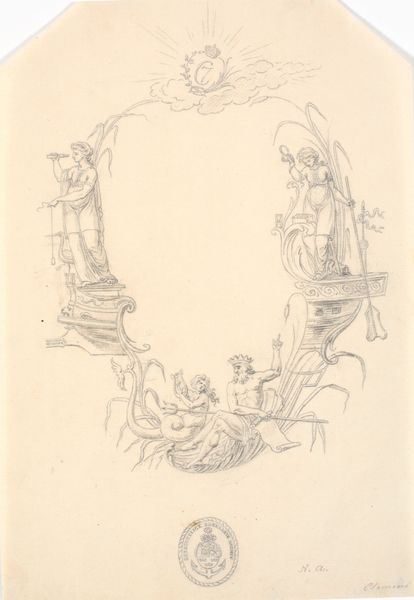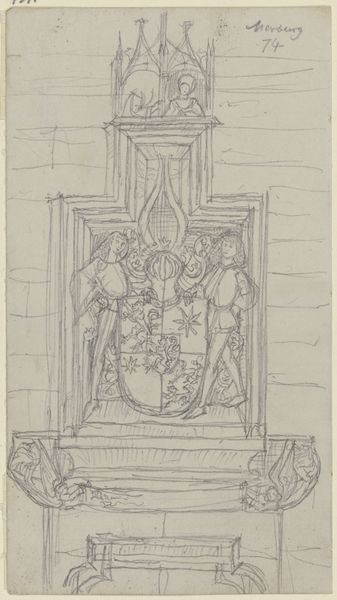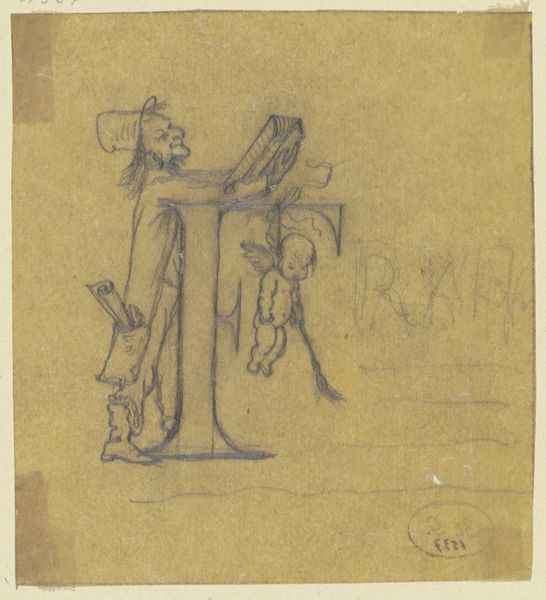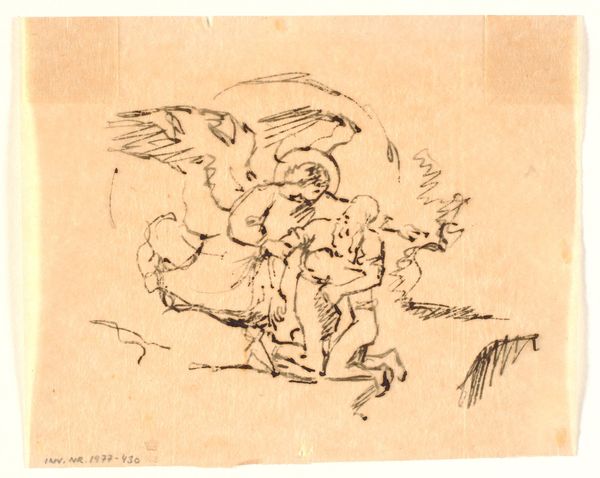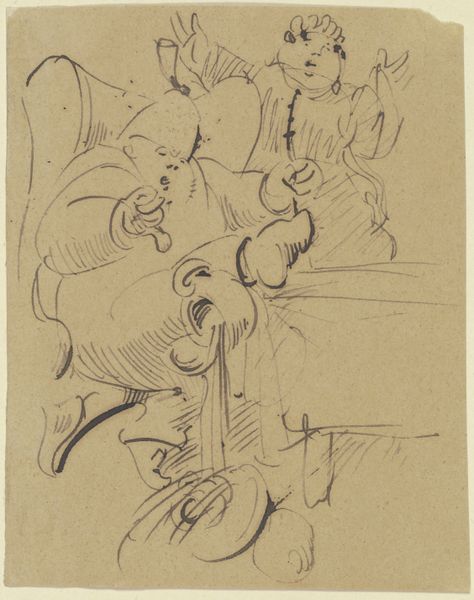
#
toned paper
#
light pencil work
#
quirky sketch
#
personal sketchbook
#
idea generation sketch
#
sketchwork
#
ink drawing experimentation
#
ink colored
#
sketchbook drawing
#
sketchbook art
Dimensions: height 387 mm, width 146 mm, height 469 mm, width 299 mm
Copyright: Rijks Museum: Open Domain
Gustave Joseph Chéret made this sketch of a large torchère, or decorative lampstand, with dancing figures out of graphite. The Belle Époque in France, where Chéret worked, was a period of optimism and flourishing arts. The image hints at the cultural references in the design of the era. We see classical forms in the fluted column and dancing figures. The figures themselves are reminiscent of Bacchantes from Roman art and yet they are carrying lamps. This reflects the era's obsession with light and spectacle. The image makes it clear that this torchère was intended for a luxurious interior, perhaps a theater or a grand salon. Understanding this sketch requires us to look into the social conditions that shaped artistic production in France at the time. One might start by exploring archives related to interior design, the art market, and the rise of mass culture during that time. This way, we can start to fully understand the role of art in the society of Belle Époque France.
Comments
No comments
Be the first to comment and join the conversation on the ultimate creative platform.
